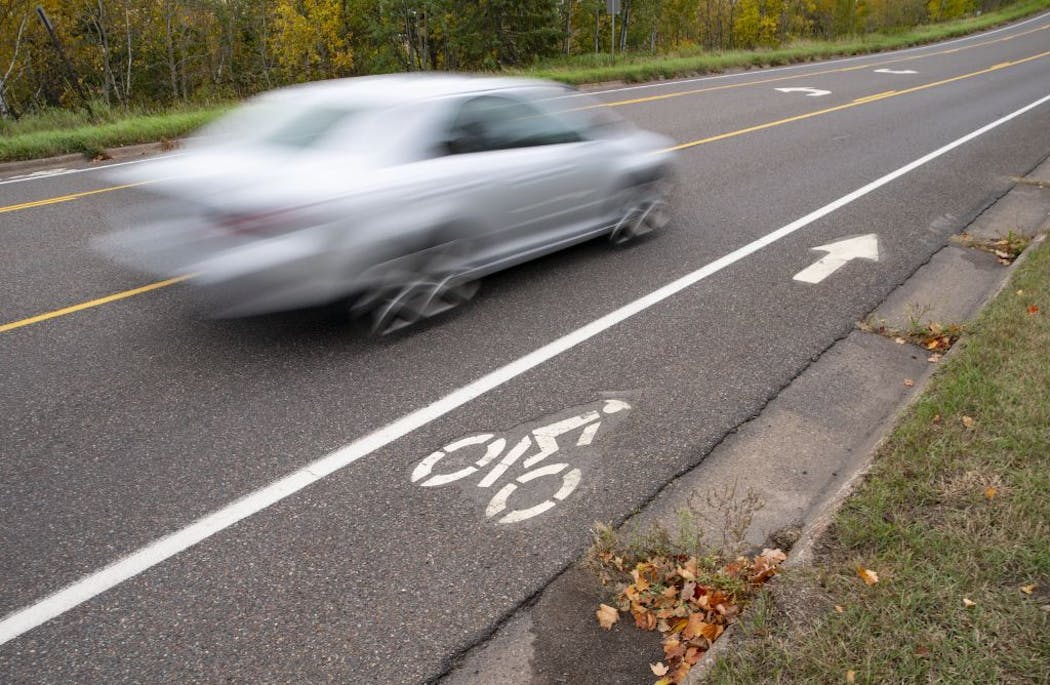If Duluth is such a great outdoors city, where are all the bike lanes?
Listen and subscribe to our podcast: Via Apple Podcasts | Spotify | Stitcher
DULUTH – With more than 80 miles of mountain biking trails cutting across the city, and always more on the way, Duluth is a destination for at least a certain type of cyclist.
That's well and good, Mike Casey thought, but if Duluth is the great outdoor city why then do they only have a couple of bike lanes?
Casey, himself a sustainable transportation advocate, asked the question as part of the Star Tribune's reader-driven series, Curious Minnesota.
"I'm just trying to bring awareness — we don't have many bike lanes in this town, and where we do they were built without bike advocacy at the table for the most part, so they don't really connect to much," he said.
Indeed Duluth has just 12.5 miles of bike lanes on the city's 450 miles of roads, many of them installed by the state or county on roads those agencies are responsible for — such as the Lake Avenue bridge or East Fourth Street.
The city has declined multiple opportunities to add bike lanes during recent major roadwork, from Superior Street downtown to East Eighth Street connecting hillside residents to college campuses. City officials and council members have long sided with on-street parking needs.
"Why can't we get this done in Duluth? The business community has basically bullied the city into submission," said Alice Tibbetts, leader of the We Walk in Duluth group. "We need to get to a tipping point where our leadership is brave enough to put up with all the backlash."
Retailers say giving up parking for bike lanes would cost them business, though research has shown sales increase when bike lanes are added. Central Avenue in Minneapolis saw a 52% increase in food sales after bike lanes were installed, according to the National Street Improvements Study.
Duluth's comprehensive plan, the document that is supposed to guide land use decisions, says a "best practice in transportation planning is to enhance safety of everyone on a street by using protected bike lanes." The city currently has none.
Duluth's first protected bike lane — separated from car traffic by metal dividers — is planned on W. Superior Street through the Lincoln Park craft district as part of a Cross City Trail detour during highway interchange work. That project was delayed to next year, and so was the bike lane. The lane will only be permanent if the city finds it cost-effective to maintain.
"Businesses will have to say they really like it," city engineer Cindy Voigt said.
About a fifth of Duluth residents live below the poverty line — double the state average — and about 10% of households don't have a car, higher than county and state rates. Tibbetts said that makes bike lanes a matter of equity and "a necessity for a city that cares about everybody."
"What are the common perceptions of what makes a city bike friendly, is it because it's flat, no winter, what is it?" Tibbetts said. "It's because there's great infrastructure. You can't be a great outdoor city without that."
---
If you'd like to submit a Curious Minnesota question, fill out the form below:
Read more Curious Minnesota stories:
Who decides when the I-35W bridge is lit in color, and how is it done?
Why do some major Twin Cities highways not connect directly?
Why hasn't Minnesota passed the Equal Rights Amendment?
Why do wild turkeys seem to thrive in the Twin Cities?
Why is Minnesota more liberal than its neighboring states?
When you flush a toilet in the Twin Cities, where does everything go?
Was Minnesota home to nuclear missiles during the Cold War?
Does Minnesota really have the worst winters in the country?



